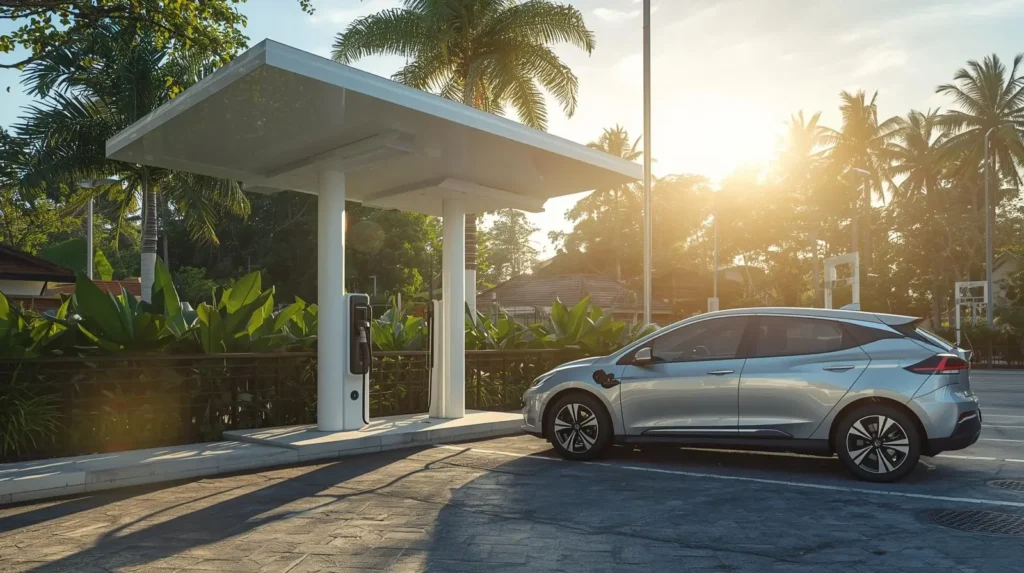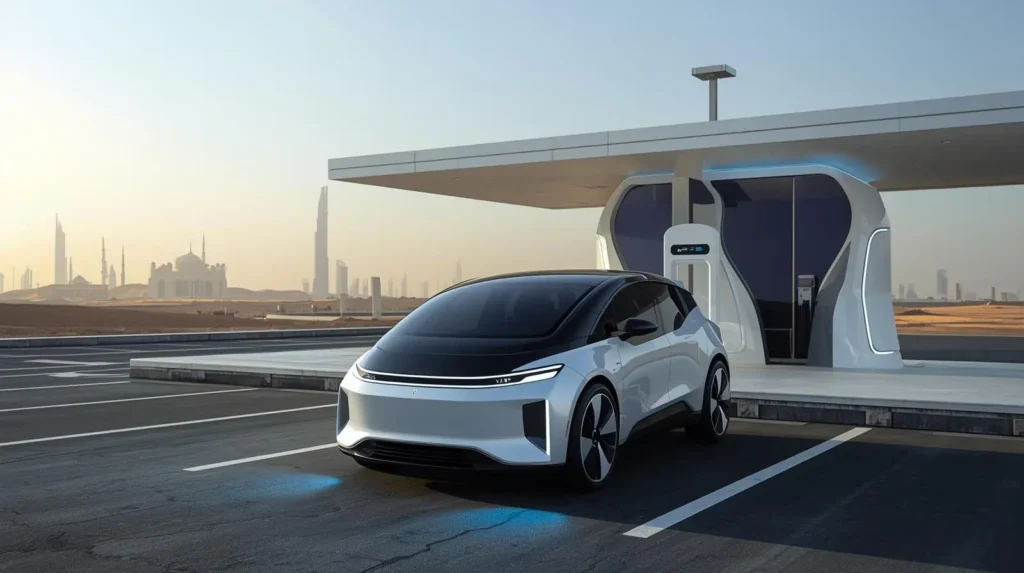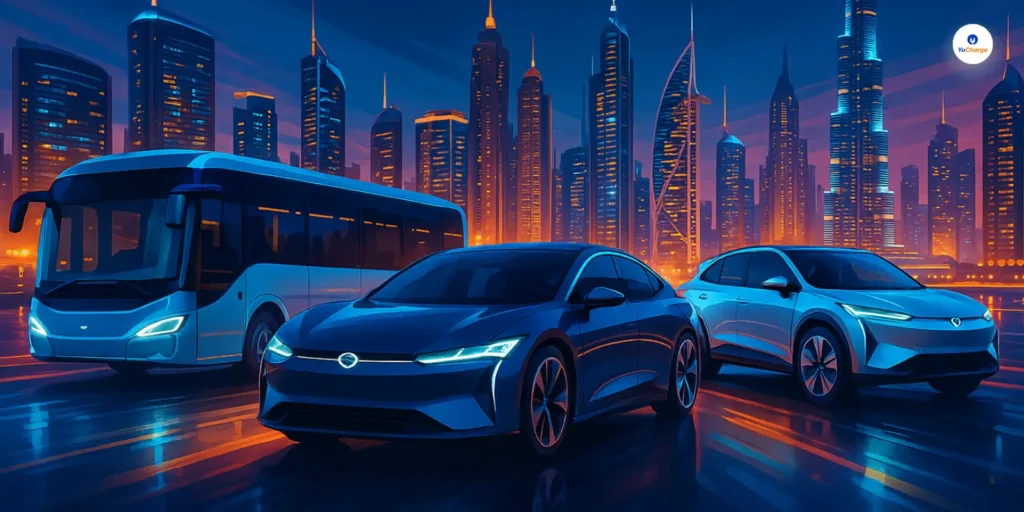
Key Features of EV Charging Stations: Imagine driving your electric vehicle (EV) with confidence, knowing a fast, smart, and reliable charging station is always within reach. Gone are the days when EV chargers were just basic power outlets.
Today’s EV charging stations are packed with advanced features that make charging faster, safer, and more convenient than ever.
With the rise of electric mobility, these stations are evolving to meet growing demands. From ultra-fast charging to smart payment systems, they are designed to enhance user experience and energy efficiency.
Whether you’re an EV owner or a business investing in charging infrastructure, understanding these features will help you make the right choice.
Let’s explore the top 10 features of EV charging stations that are shaping the future of electric vehicle charging!
Multiple Connector Types
Modern charging stations support different EV models. They offer various connector types for better compatibility. Some common connectors include:
- SAE J1772: Used for Level 1 and Level 2 charging in North America.
- CCS (Combined Charging System): Supports both AC and DC fast charging.
- CHAdeMO: A fast-charging option used in Japanese EVs.
- Type 2: Common in Europe, supporting both AC and DC charging.
Providing multiple connector types allows EV owners to charge their vehicles easily. It ensures every EV model gets access to reliable charging.
Charging Speed and Power Output
Charging speed matters to EV owners. The time required to charge an EV depends on the power output. Charging stations are divided into three levels:
- Level 1 Charging: Uses a standard 120V outlet and provides slow charging.
- Level 2 Charging: Requires a 240V outlet and charges faster than Level 1.
- DC Fast Charging: Uses high-power DC current to charge in a short time.
Ultra-fast chargers can deliver up to 700 kW, charging 80% of an EV in six minutes. Faster charging means less waiting time and better efficiency.
User-Friendly Interface
A smooth charging experience depends on an easy-to-use interface. Most modern stations have touchscreen displays. These screens show:
- Charging progress
- Session duration
- Cost and payment options
Clear and simple interfaces make charging easy for all users. A well-designed screen reduces confusion and enhances user experience.
Network Connectivity
EV charging stations now come with smart connectivity. They use cloud-based platforms to offer advanced features. Connectivity allows:
- Mobile App Integration: Users can monitor charging through apps.
- Remote Management: Operators can troubleshoot problems from anywhere.
- Data Analytics: Real-time data helps track station usage and energy consumption.
With network connectivity, users get better control over their charging experience. Operators also get insights to improve station performance.
Payment Flexibility
Charging stations now support multiple payment methods. Users can choose the most convenient option, such as:
- Credit Card Payments: Pay directly at the station.
- Mobile Apps: Make payments through dedicated applications.
- RFID Card Access: Use a registered RFID card for easy access.
Flexible payment options make EV charging stations more accessible. This feature ensures a smooth payment process for all users.
Load Management
Load management is one of the best features of EV charging stations optimizes power distribution among chargers. It prevents overloading the electrical grid and reduces electricity costs. This feature is useful for locations with multiple charging stations, like:
- Workplaces
- Parking lots
- Public charging hubs
By balancing the power supply, charging remains stable and efficient. Load management also helps operators save on energy expenses.
Also Read: Latest EV Charging Stations Setup Costs in India
Safety Features
Safety is a top priority in EV charging stations. Modern stations include built-in safety measures such as:
- Ground Fault Protection: Detects and prevents electrical faults.
- Surge Suppression: Protects against voltage spikes.
- Weatherproofing: Shields the station from rain, dust, and extreme temperatures.
These features ensure safe and reliable charging for all users. Proper safety measures prevent accidents and equipment damage.
Remote Monitoring
Remote monitoring helps users and operators track charging sessions. This features of EV charging stations allows:
- Real-time station availability updates
- Notifications for charging completion
- Troubleshooting alerts for maintenance
Operators can manage EV charging stations more efficiently with remote monitoring. It reduces downtime and improves service quality.
Regulatory Compliance
All charging stations must follow safety and industry regulations. Compliance ensures:
- Safe electrical connections
- Compatibility with different EV models
- Standardized communication protocols
Regulated EV charging stations guarantee a secure and smooth experience for all users. Compliance also protects against technical failures.
Access Restriction & Billing
Access control prevents unauthorized usage of charging stations. Common access restriction methods include:
- RFID card access
- Password protection
- App-based authentication
For commercial charging stations, billing systems track electricity usage accurately. Digital billing ensures transparent pricing and fair payments.
Also Read: Can I Charge My EV While It is On?
Conclusion
The rapid adoption of EVs has led to major advancements in EV charging stations. These stations now include multiple connector types, fast charging options, safety features, and smart connectivity. They also provide user-friendly interfaces, flexible payment methods, and remote monitoring for convenience.
Understanding these features of EV charging stations helps users choose the best options for their needs. As technology continues to evolve, EV charging stations will become even more efficient, reliable, and user-friendly.



